Frederica Freyberg:
I’m Frederica Freyberg. Tonight on “Here & Now,” full coverage of the State Supreme Court election, including insight from former Justice Janine Geske. A new UW study connects how Wisconsinites vote with how they consume their news. And a preview of the new WPT documentary, “Portraits from Rural Wisconsin.” It’s “Here & Now” for April 5th.
Announcer:
Funding for “Here & Now” is provided in part by Friends of Wisconsin Public Television.
Frederica Freyberg:
Wisconsin, the razor-thin margin state. That sums up the long night Tuesday that was the state Supreme Court race. According to the State Elections Commission, voter turnout was at just under 27%. That’s the second highest turnout for a non-partisan election since 2000. The results, ahead of next week’s official canvass give Appeals Court Judge Brian Hagedorn about a 6,000 vote edge over his opponent, Chief Appeals Judge Lisa Neubauer. Neubauer is gauging support for a recount, a recount that she would have to pay for out of her own pocket. Zac Schultz has the story.
Zac Schultz:
Supporters of Judge Lisa Neubauer were relaxed and confident through most of Tuesday evening. As early returns showed Neubauer with a healthy lead over her opponent, Judge Brian Hagedorn. But their anxiety showed as the number of precincts reporting approached 90%. Neubauer’s lead was down to a few hundred votes.
Greta Neubauer:
Hello everyone.
Zac Schultz:
By the time Neubauer’s daughter, State Representative Greta Neubauer took the stage, the lead was gone.
Greta Neubauer:
This race is too close to call for tonight. It is going to take all night and maybe longer for us to get a final result on this race.
Zac Schultz:
At Judge Hagedorn’s party, it was all smiles and hugs.
Rebecca Bradley:
I am really tentatively happy to announce that we are expecting a victory tonight.
Zac Schultz:
By Wednesday morning, Hagedorn declared victory, calling his half a percentage lead insurmountable. Neubauer took to Facebook to talk about a recount.
Lisa Neubauer:
And so now, the morning after the election, this race is still too close to call. We need to make sure that every last vote is counted, and that’s going to take a little time.
Zac Schultz:
Because Hagedorn’s lead is under 1%, Neubauer can request a recount, but since it’s more than .25%, she would have to pay for it, which could end up you costing more than a million dollars. If the last two statewide recounts in Wisconsin are an indicator, Hagedorn’s 5900-vote lead has a good chance of holding up. In 2011, a Supreme Court race between Justice David Prosser and Joanne Kloppenburg went to recount and both candidates gained votes. In 2016, the Green Party paid to recount the presidential election and fewer than a thousand votes were found.
Clerk:
All rise.
Zac Schultz:
So if Hagedorn does win, conservatives will have a 5-2 hold on the Supreme Court. This race isn’t even officially over, and both sides are already looking to next year, when Justice Daniel Kelly is up for election.
Daniel Kelly:
I think it’s going to be pretty much the same.
Zac Schultz:
He endorsed Hagedorn and says he plans to run on a similar theme of rule of law and a limited role for the court.
Daniel Kelly:
That’s what the dynamic is in the state, I think. That’s what brought them out this time, and I’m presuming that’s what will bring them out next year as well.
Zac Schultz:
But next year’s Supreme Court race falls on the April presidential primary, and Democrats hope a crowded presidential field will lead to high turnout.
Cory Mason:
It has been a much heavier Democratic turnout in the spring of 2020 because that will be the presidential primary.
Zac Schultz:
Even if liberals win that race, the conservatives will control the court until 2023, when Chief Justice Pat Roggensack is up for election.
Frederica Freyberg:
That was Zac Schultz reporting. For analysis on the race and the results, we turn to former State Supreme Court Justice Janine Geske who joins us from Milwaukee. Justice, thanks very much for doing so.
Janine Geske:
You’re welcome, Frederica.
Frederica Freyberg:
So what is your reaction to the Supreme Court election results?
Janine Geske:
I like many people was surprised at the outcome. I anticipated it would be close, but I was surprised that Judge Hagedorn came out the victor.
Frederica Freyberg:
Why were you surprised?
Janine Geske:
Well, I think Judge Neubauer had to have really been campaigning very early, had a very traditional campaign, had most of the judges supporting her, had been out there and I think the feeling was that, you know, she was representing herself as the fair and impartial judge. And Judge Hagedorn, of course, had these writings from when he was at Northwestern Law School that were perceived, at least in the Milwaukee area as a negative and I think there was a sense that she would prevail. And most of his ads came at the end, so he didn’t have the advertising she had until the last week or so, so it was a surprise.
Frederica Freyberg:
Did this election in your mind once and for all kind of cast off the cloak of non-partisan judicial elections?
Janine Geske:
Well, I’m afraid it does. And I’m very sad about that. Although both candidates talked being the fair and impartial judge and the other not being. Clearly they were identified with political parties and advocacy groups and a sense that one would vote one way and one would vote the other, and I think we’re losing that sense of we want judges who are clearly not attached to either side and are fair and impartial.
Frederica Freyberg:
So how fair or unfair did you think reporting on Brian Hagedorn’s prior writings on homosexuality and involvement in a school that banned same-sex relationships was?
Janine Geske:
I thought — I thought that was fair reporting. I thought it was fair game. Particularly because not only did he write about his religious views, which, you know, is totally appropriate, but he had gone further in his writings to talk about how those religious views would have influenced him on particular cases. And so that clearly was fair game, and it became a hot button, I think, on both sides in terms of the election, but I thought it was appropriate, just as it was appropriate to talk about the ties that Judge Neubauer had with the Democratic Party.
Frederica Freyberg:
Did you feel as though then both candidates would kind of stand to come in with an agenda?
Janine Geske:
Well, no. You know, I worried about Judge Hagedorn because he did write not only about his religious views, and many of us on the bench have religious views, but how that would impact the decision of cases. And although he frequently repeated how he would divorce himself from those feelings, I don’t think he really explained how he would do that. I always give the example, if we had had the death penalty and I would have been on the court, I would have had to recuse myself off of death penalty cases. I’m so opposed to the death penalty that I never could have affirmed a death penalty case. And I’m the not sure he ever explained how he feels he could rule against a position that is inconsistent or consistent with his religious beliefs. And I think that became a plus and a minus, depending whether you supported him or not.
Frederica Freyberg:
Lisa Neubauer, as you suggested, had the endorsement of hundreds of judges across Wisconsin. What does that say?
Janine Geske:
I think that people saw her as very judicial, someone who has that history of being impartial, not being tied to any hot button political issues despite the contacts in her family. And that she would be the traditional judge just calling them like she saw them. I think most judges want to be, and I think that people were concerned, particularly with the writings of Judge Hagedorn, whether he could do that.
Frederica Freyberg:
On this kind of news of the day, I have this question, why would you think that liberal groups litigating over the lame duck legislation in Wisconsin want to take their case directly to the State Supreme Court at this moment?
Janine Geske:
Well, I think they think that — well, first of all, they think they already have a majority of the kinds of judges that will decide, oh – the liberal groups – you’re asking me why they would want to take it up.
Frederica Freyberg:
Right.
Janine Geske:
Before Judge Hagedorn arrives, I think that, you know, that Justice Abrahamson, although she’s still participating, she’s obviously challenged with her health, and the other judges, I think that they think that they’re going to be able to prevail with them. But if not with Judge Hagedorn, they’re going to be in, you know — have a higher burden, I think, in terms of convincing them, having been the governor’s legal counsel.
Frederica Freyberg:
Right. Exactly. Janine Geske, former State Supreme Court Justice, thanks very much.
Janine Geske:
You’re welcome.
Frederica Freyberg:
More now on the State Supreme Court with coverage on the topic by our partners at WisContext.org. Wisconsin is one of 38 states that holds elections for justices on the high court, most of those states including Wisconsin designate the position as non-partisan. UW-Green Bay Political Science Professor Aaron Weinschenk cuts through that myth in a new story for WisContext. He finds plenty of evidence of partisanship among candidates for the court. Aaron Weinschenk joins us now from Green Bay. Thanks very much for being here.
Aaron Weinschenk:
My pleasure.
Frederica Freyberg:
So in your article for WisContext, you conclude that Wisconsin is likely to continue to see incredibly partisan non-partisan elections and you have numbers to back that up. So let’s start with what you found about whether the 2019 election for Supreme Court was more or less partisan than previous elections.
Aaron Weinschenk:
Yeah, so what I did was, I thought that presidential vote patterns would be a good way of capturing the partisanship of an area. So I did some simple statistical tests and was able to see that there’s a really strong correlation between presidential vote returns and how counties vote in Supreme Court elections, like record high level this is time around and has been pretty high in the recent past. So I think that’s pretty good evidence that these things are partisan, that partisanship makes its way into the races even though partisanship isn’t on the ballot officially.
Frederica Freyberg:
You also compared the 2019 State Supreme Court election to prior State Supreme Court elections and found a trend in partisanship. What was that trend?
Aaron Weinschenk:
Yeah, in the last few elections, partisanship has played a pretty important role. It’s definitely gone up over time. In the recent past, so late ’90s, early 2000s, there was definitely a partisan component but not nearly as strong as what you see today. In fact, the earliest data point that I have, 1996, there’s hardly any connection and it sort of goes up from there. So it has been the case that partisanship has played less of a role but we’re kind of in new territory now where every single election seems to outpace the last one and partisanship seems to play an even stronger role.
Frederica Freyberg:
What was different this year compared to the election that liberal Justice Rebecca Dallet won in 2018?
Aaron Weinschenk:
Yeah, I think that one was pretty partisan. This was slightly more partisan. In this one, there was a lot of imagery regarding political candidates and officials built into the ads and reference to some of the ads had pictures of President Trump in them or Hillary Clinton or Eric Holder, so it was pretty explicit and then also outside groups that were pretty easy to identify their ideology and their partisan leaning spent a lot of money and ran a lot of ads to try to support the candidates. So that sends a pretty clear signal to voters about what people believe and what their leanings are.
Frederica Freyberg:
You say as to the hyperpartisan nature of supposedly non-partisan high court elections, Wisconsin could just go ahead and make them partisan elections. So what would that mean?
Aaron Weinschenk:
Yeah, I mean, they’re essentially partisan affairs anyway so we could just change the institution so it matches what actually happens. There are a fair number of states that do that, and they actually tend to see more engagement in those elections relative to the non-partisan places. So we could certainly think about changing the institution if we thought we weren’t really getting what we wanted out of the institution as it currently exists.
Frederica Freyberg:
So you say that, in fact, if you made them partisan elections, there’d be more engagement. Does that mean that more people would vote?
Aaron Weinschenk:
Yeah, you’d tend to see higher turnout, at least that’s what the research in political science suggests. You have to remember that a lot of these kinds of races are low salient events, and so people may not participate if they go there for other things but don’t have an easy cue on the ballot and so if you make that accessible, you make it easier for people to make choices even though they might not have done a lot of research or they don’t have a lot of background on the candidates.
Frederica Freyberg:
So there are other options than making an election for the State Supreme Court a partisan affair, and that would be like nominating commissions that select justices based on merit but you don’t think that would happen either. So we just kind of continue with the non-partisan pretext at the polls?
Aaron Weinschenk:
It’s really hard to change institutions. There’s a real bias towards the status quo and unless some people really work hard on it and raise it to a high level of attention, it’s hard to change these things that have been around for a while, but I think people are increasingly recognizing that this institution isn’t what we say it is. And so if that’s the case, then maybe we want to re-think it. Maybe we don’t want to elect judges at all. Maybe we want to put partisanship on the ballot since we know they’re becoming pretty partisan these days. So there are ways forward, for sure.
Frederica Freyberg:
And yet your expectation is that we’re not going to do any of those things?
Aaron Weinschenk:
Yeah, my expectation is that we’re not and I think that will agitate some people who really think these should be non-partisan or who think that people shouldn’t be electing judges or justices in the first place, but it’s pretty hard to convince policy makers to reform institutions, especially when they’ve been around for quite a while.
Frederica Freyberg:
Absolutely. All right. Professor Aaron Weinschenk out of UW-Green Bay, thanks for joining us.
Aaron Weinschenk:
Thank you.
Frederica Freyberg:
All eyes are on Wisconsin, especially after a close statewide race in an election that just swung the other way only a year ago. The UW research team that includes journalism professors and the author of “The Politics of Resentment” Katherine Cramer just published an article titled “What Makes Wisconsin Swing?” digging into why voters in this state so readily change up their votes. UW-Madison Professor of Journalism Mike Wagner joined us on this topic earlier. Thanks very much for joining us.
Michael Wagner:
Oh, it’s my pleasure.
Frederica Freyberg:
So what does yet another squeaker of a statewide election in the race for the Supreme Court say about Wisconsin’s status as a tight swing state?
Michael Wagner:
I think it says it’s extraordinarily likely we’ll be watching Wisconsin late into the night in 2020. The map looks a lot like the Evers-Walker map did for the State Supreme Court race and less like the Trump and Clinton map. So some things are fundamentally shifting in the state and it largely becomes a turnout story. There was greater turnout in Green Bay, Marathon County, Waukesha County, those kinds of places which helped Hagedorn in the State Supreme Court race whereas lower turnout in Milwaukee really hurt Neubauer.
Frederica Freyberg:
It’s no accident, obviously or mistake that the Democratic National Committee chose Wisconsin for its convention.
Michael Wagner:
It is a bright shining “we’re sorry” sign flashing saying we know we needed to do more in this state in the last election and this is a way to rectify it.
Frederica Freyberg:
Now, we’re really here to talk about your research, and according to your team’s research, in a recent article titled “What Makes Wisconsin Swing,” 12% of voters in Wisconsin split their ticket. Now what’s an example of this?
Michael Wagner:
So what we’re saying here is, just over 1 in 10 Wisconsinites voted for Tammy Baldwin and Scott Walker in 2018 or voted for Leah Vukmir and Tony Evers. Although most of the people that split their ticket were Baldwin-Walker voters in Wisconsin in 2018.
Frederica Freyberg:
Now does Wisconsin stand out in this regard. How unusual is it?
Michael Wagner:
It’s becoming less common so as the country has polarized over the last 20, 25 years, there’s less split ticket voting than there used to be. There used to be this really robust literature in political science, why do people split their tickets, are they trying to balance the presidency and the majority in Congress to keep them you know honest with each other or is it something else? And then that literature sort of faded as the country has polarized so much and most people vote a straight party line ticket but 1 in 10 of us still split those tickets when we vote.
Frederica Freyberg:
So Wisconsin does kind of stand out in this regard?
Michael Wagner:
It stands out and it stands out in a really unique way that has a lot to do with communication. So the more that people who get information from a source that is not so likely to tell them that they’re right, so the liberal who watches some Fox News, the conservative who watches MSNBC, the more likely they are to split their ticket. It doesn’t harden their preferences, it opens them up to the other side.
Frederica Freyberg:
In fact, you called this an information diet.
Michael Wagner:
Right.
Frederica Freyberg:
And say that 40% of Wisconsinites have balanced information diet. Describe what you’re talking about.
Michael Wagner:
Right. So we fancy the information diet as where do people get their information? Are they getting it from mainstream television networks and public television and public radio? Do they get it from local newspapers, national newspapers? Do they get it from ideological sources on cable television or ideological web sources? Do they get it from Facebook and Twitter on social media? Where do they get their information and what’s kind of the partisan tilt of that, and, what’s the actual individual’s perception of the partisan tilt of the information that they’re getting? And we kind of aggregate all of that together to get a sense of what’s the information people are being exposed to? Is it liberal, conservative, balanced? How does that influence what people know, what they believe to be true, what they want, how they participate, all that sort of thing.
Frederica Freyberg:
40% of Wisconsinites that you surveyed, though, having a so-called balanced diet in this way sounds like a high number.
Michael Wagner:
Yeah, I mean, I think it’s reasonable to interpret that as good news. That people are willing to hear from multiple points of view before they try to make political decisions. And they want to get their information from more than one source and to get their information from a source that’s not just going to tell them they’re right. Now, the more extreme one is in their partisanship, the more likely they tend to just get information or get more information, I should say, from a source that tells them they’re right and the other side is not just wrong but dangerous, evil and all that sort of thing.
Frederica Freyberg:
In fact, you often say that voters with the most polarized views mostly talk amongst themselves, right? Family and friends.
Michael Wagner:
Right.
Frederica Freyberg:
Otherwise voters who are less had polarized, who are they talking to?
Michael Wagner:
So that’s another part of the information diet. It’s not just the sources that are talking at us about the information but also who we talk with. And so as people especially when they talk to their co-workers. You know, you kind of can self-select your partner in your life and you tend — people tend to marry people whose views are similar to their own but at work, all bets are off. So the more you talk with a diverse set of people, and the workplace is one place to find a diverse set of people, the more people are willing to split their ticket when they vote and the less hardened partisan attitudes they have. They’re less extreme about Governor Walker or President Obama, depending upon which party they’re in. They’re less extreme about attitudes towards groups like the Tea Party or labor unions. The more diverse sets of people we talk to, the more moderate opinions we have on average.
Frederica Freyberg:
Now, again, just to wrap this up, you say where people get their information about politics could play a decisive role in 2020. How so?
Michael Wagner:
Well, when you have a State Supreme Court race with 5,000 votes or so separating the winner from the loser, and roughly 10 to 12% of the people getting information from sources that are telling them they might not be right, that’s a mix to where between 10,000 and 40,000 votes could very well did decide the election in Wisconsin and for president in 2020. So that small group of voters could be decisive.
Frederica Freyberg:
Michael Wagner, thanks very much.
Michael Wagner:
My pleasure.
Frederica Freyberg:
Wisconsin’s deep partisan divide is sometimes discussed in terms of rural versus urban values. In tonight’s look ahead, a preview of a new Wisconsin Public Television documentary. A one-hour special that explores the challenges of life in the country. It’s called “Portraits from Rural Wisconsin.” In this scene, Gays Mills feed service owner Tammy Olsen organizes an emotional town hall meeting on milk prices.
Tammy Olsen:
We want to say thank you. The support we’ve received for this has been tremendous. So just a few quick announcements.
Uncharacteristically, I reached out and I made some phone calls and sent some emails to my state representatives. And much to my surprise, and much to my happiness, we are now having our own town hall-type meeting.
Andy Soth:
Tammy put together a panel of politicians, their aides, civil servants, with industry representatives.
Tammy Olsen:
And we have Kevin Walleser. He just walked in from the Milk Marketing Board, and I believe we have a seat of honor for you too.
Andy Soth:
Before the first question, Tammy gets a round of applause.
Tammy Olsen:
Thank you. This has really been a labor of love right straight from my heart.
Andy Soth:
The gathered dairy farmers whose livelihoods are dictated by the laws of supply and demand have questions about both. On the demand side, ideas about schools.
Woman:
And my thought is, get our kids drinking good milk. How do you get good milk into schools?
Man:
Kevin, go ahead and answer that one.
Kevin Walleser:
Essentially, they want kids to drink chocolate milk that tastes like dirty water. Like in your after school vending machines, it’s got to be a 12-ounce bottle. Well, none of the vending machines work for 12-ounce bottles. They work for 16-ounce bottles. So then everything’s got to be retooled. It’s total government is what it is.
Woman:
We had a question here.
Andy Soth:
There are worries about competition in the marketplace.
Woman:
We went to Wal-Mart, my daughter and I the other day. Check out the milk section. Almond milk all the way across the top. That’s not milk. Seems like everybody’s against us. They can take stuff from a nut and sell it as nutritious for milk. To me, that just blows my mind.
Andy Soth:
Then the questioning turns to supply.
Man:
I want to address this to Kevin. What are we overproducing right now?
Kevin Walleser:
Nationwide, how much do we need?
Man:
Nationwide.
Kevin Walleser:
We’re probably 15% long.
Man:
We’re 15?
Kevin Walleser:
Yeah.
Man:
Big number.
Kevin Walleser:
We’re probably 15% long. We can’t drink our way out of this domestically.
Woman:
Do we have the microphone? Thank you.
Man:
I went the short course in Madison, and that was in 1988 and they told me that 80 cows is enough for one family. If you’ve got two families, 160 cows is enough for that. So why, why does everybody want to overproduce, you know? Why can’t we cut back our numbers on cows? This thing of always letting the bigger farmer get more cows because they want more money then they can produce it at $10. For what, you know? We can’t even — we can’t even buy equipment. We can’t do anything to do our own stuff. These young farmers here, how the hell do they start farming?
Woman:
Exactly.
Man:
You know? What do they got? Do I say to my two young kids that want to go into farming? Do I say, “Oh, no,” you know?
Andy Soth:
Some emotions are close to the surface.
Woman:
I think we’re all looking for a silver bullet. We’re looking for a scapegoat and we’re looking for an easy answer. And I don’t think any of those exist. And I just made a little note here that kind of bad things happen when people get backed in a corner and you have a whole room full of people here who feel like they’re backed in a corner.
Frederica Freyberg:
Andy Soth is the producer of “Portraits From Rural Wisconsin.” The debut of the one-hour documentary is next Thursday, April 11 at 8:00 p.m., on Wisconsin Public Television.
Now for an update on down-ballot races in Wisconsin. Madison’s long time mayor, Paul Soglin, lost his re-election bid on Tuesday. Once dubbed the city’s “mayor for life,” Soglin started his political career on the city council while in grad school at UW-Madison. He went on to serve as mayor for two non-consecutive terms in the 70s, 80s and 90s. He was elected to a third term in 2011, completing more than two decades in office. Soglin made an appearance on the statewide political stage last year, when he ran unsuccessfully in the Democratic primary for governor. The 73-year-old would not say what his post-election plans were, nor whether he had plans to run again in the future. Paul Soglin was defeated by Satya Rhodes-Conway, a former Madison city councilmember. Next week we will share results of new Marquette Law School poll and we’ll travel to the school districts of Abbotsford and Green Bay, where we look at the challenges facing non-English-speaking students. That’s all for tonight’s program. I’m Frederica Freyberg. Have a great weekend.
Announcer:
Funding for “Here & Now” is provided in part by Friends of Wisconsin Public Television.
Search Episodes
Related Stories from PBS Wisconsin's Blog

Donate to sign up. Activate and sign in to Passport. It's that easy to help PBS Wisconsin serve your community through media that educates, inspires, and entertains.
Make your membership gift today
Only for new users: Activate Passport using your code or email address
Already a member?
Look up my account
Need some help? Go to FAQ or visit PBS Passport Help
Need help accessing PBS Wisconsin anywhere?

Online Access | Platform & Device Access | Cable or Satellite Access | Over-The-Air Access
Visit Access Guide
Need help accessing PBS Wisconsin anywhere?

Visit Our
Live TV Access Guide
Online AccessPlatform & Device Access
Cable or Satellite Access
Over-The-Air Access
Visit Access Guide
 Passport
Passport


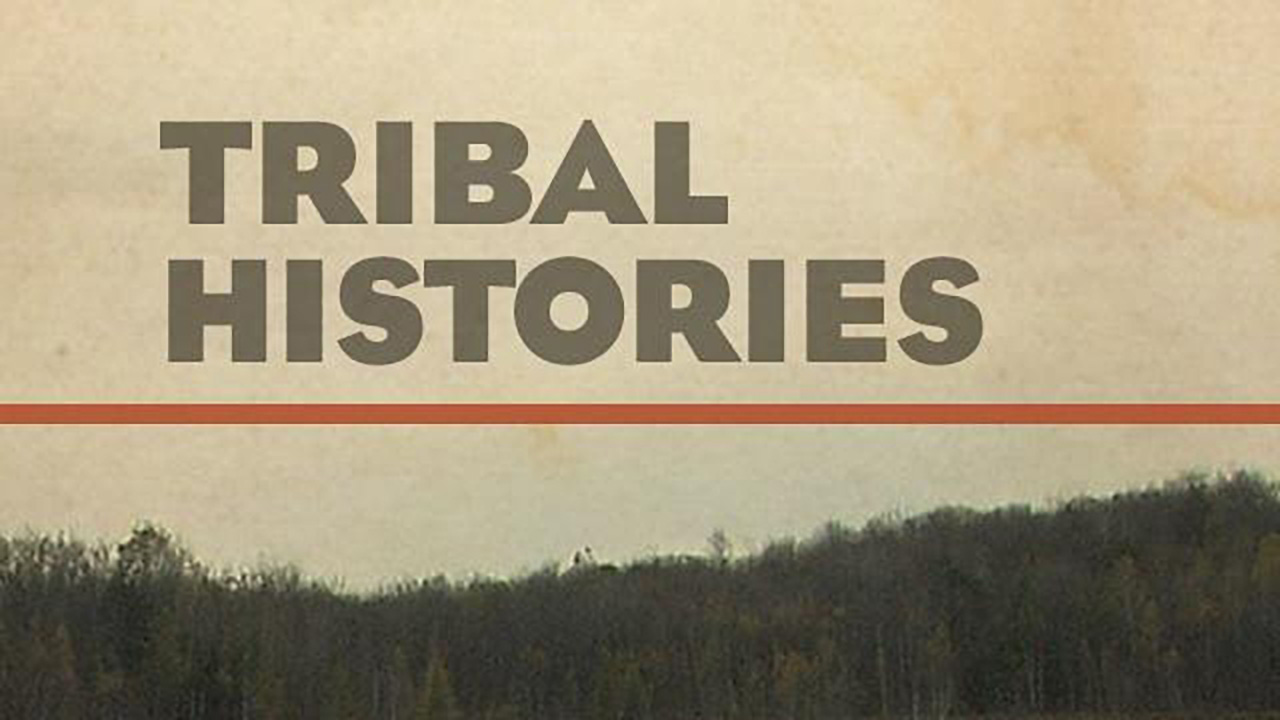
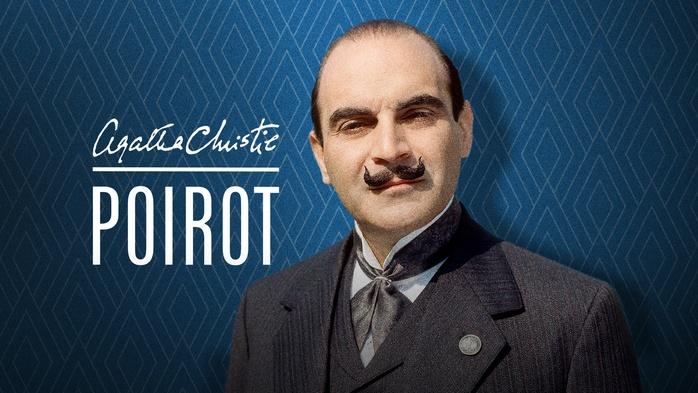




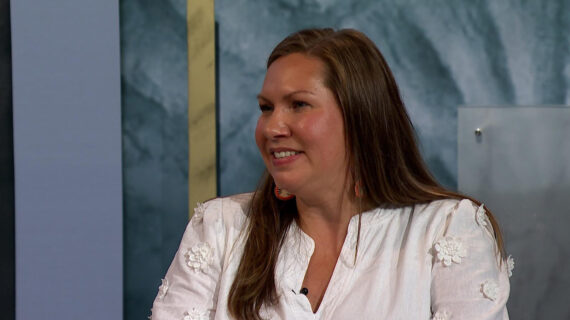
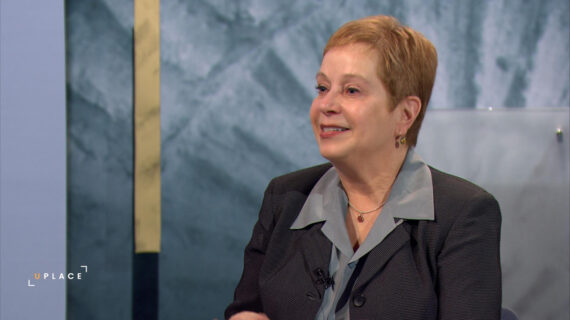
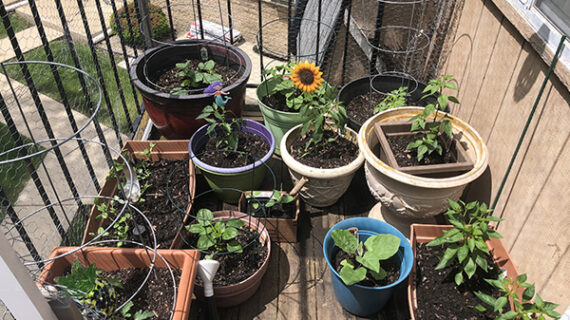
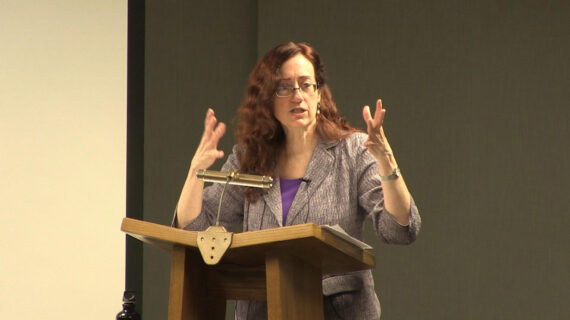
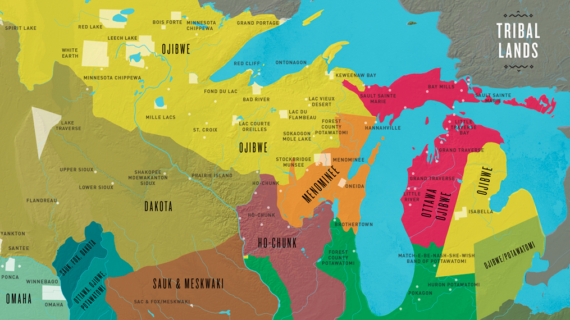
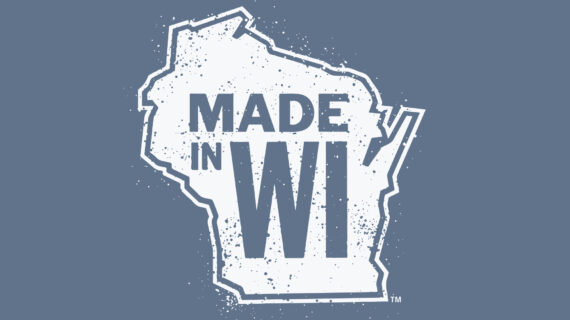
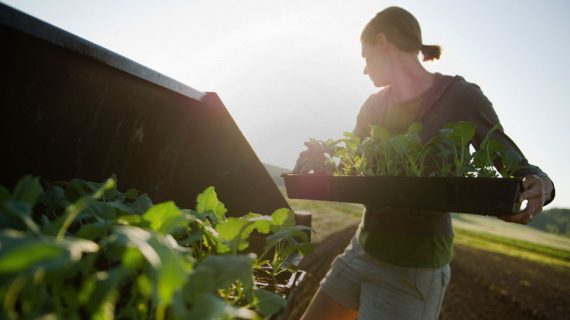
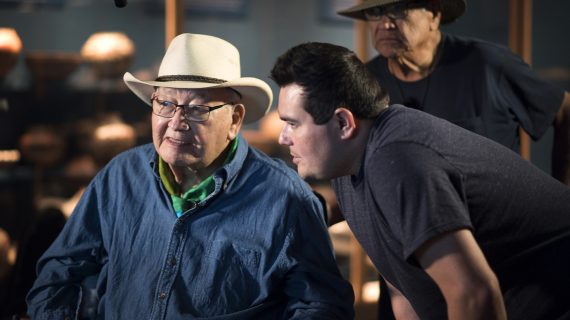


Follow Us